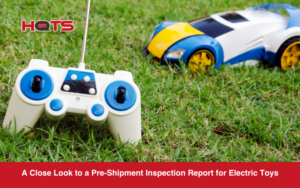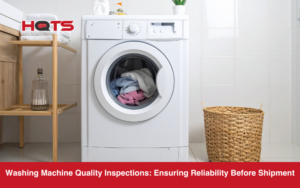If your business wants to import electronics into the EU, there are some hurdles you’ll need to overcome, including environmental compliance. This is where the Waste Electrical and Electronic Equipment (better known as WEEE) Directive comes in. This helpful guide should teach you all about what WEEE is, what it covers and how to comply with it.
What is the WEEE Directive?
Represented by a symbol depicting a crossed-out wheeled bin, the WEEE symbol is a widely seen but often misunderstood area of compliance.
The WEEE directive came into law in 2003, with the aim of preventing the increasing amount of electronic waste ending up in landfills by promoting the reuse, recycling, and recovery of valuable materials from discarded electrical and electronic equipment. The directive was later replaced by Directive 2012/19/EU, effective August 13, 2012. The updated directive expanded the scope (e.g., including photovoltaic panels from 2018) and introduced an “open scope” for EEE not explicitly excluded.
The directive places the responsibility for the disposal of WEEE on the manufacturers or distributors of such equipment. This means businesses placing EEE on the EU market are obligated to ensure that an infrastructure exists for collecting, treating, and recycling these products once they become waste.
What products fall under the WEEE Directive?
The WEEE Directive covers a broad range of products; generally, if a product has a plug or requires a battery to operate, it likely falls under WEEE.
The directive categorizes EEE into six main groups:
-
- Lamps: Fluorescent lamps, LED lamps etc.
- Large equipment: Washing machines, dishwashers, electric stoves (anything whose external dimensions are more than 50 cm).
- Screens, monitors, and equipment: Televisions, monitors, laptops (and anything else containing screens with a surface greater than 100 cm²).
- Small equipment: Vacuum cleaners, toasters, electric kettles (anything with an external dimension of less than 50 cm).
- Small IT and telecommunication equipment: Mobile phones, GPS devices (like the above, must have an external dimension of less than 50 cm).
- Temperature exchange equipment: Refrigerators, freezers, air conditioning units etc.
The WEEE Symbol
The WEEE symbol indicates that the product it is attached to should not be disposed of with unsorted municipal waste but instead collected separately for proper treatment and recycling.

To affix the label, make sure it includes the symbol of the crossed-out wheeled bin as well as your identification mark (i.e. your brand name or trademark).
If your product was placed on the market after 2005, the symbol must also include a single black line underneath it. Alternatively, you can skip this if the label includes the date (specifically the year and month) that the product was placed on the market.
How to Achieve WEEE Compliance
Achieving WEEE compliance for European electronic imports involves four key steps:
- Step 1: Determine if your products fall under the WEEE directive.
- Step 2: If your company sells electronics in the EU, you must register as a producer in the country where your products are sold.
- Step 3: If your company does not have a physical presence in the EU, you will more than likely need to hire an Authorised Representative (or AR)
- Step 4: Implement a service that will allow your business to collect and recycle products that you sell, since waste from these products is your responsibility.
Once you’ve done all of this, congratulations; you are now compliant! However, to stay compliant, you must submit periodic reports. These reports should detail the quantities and categories of your products, as well as how much waste you are collecting and recycling.
Common Questions & Misconceptions
I am a small manufacturer, does WEEE compliance still apply to me?
Yes, WEEE regulations apply to any business, regardless of size, that places electrical and electronic equipment on the EU market, including importers, distributors, and even online sellers.
Where do I need to place the label?
Only in special cases are you allowed to place the WEEE symbol on a product’s packaging; outside of these cases, it must be placed directly on the product itself.
If my product is for B2B, does it need the symbol?
Previously, certain countries did not require the WEEE symbol to be displayed on B2B products, however this now only applies if the device is sold explicitly to Germany, and other EU countries require it to be affixed for both B2B and B2C purposes.
Ensure Your Compliance with HQTS
Ensuring WEEE compliance can be daunting, and errors can lead to significant fines, product recalls, and damage to your brand reputation. That’s why you should team up with a trusted regulatory partner like HQTS.
We offer comprehensive electrical product compliance services, including guidance on the WEEE Directive. Contact us today to find out more about the services we offer!




